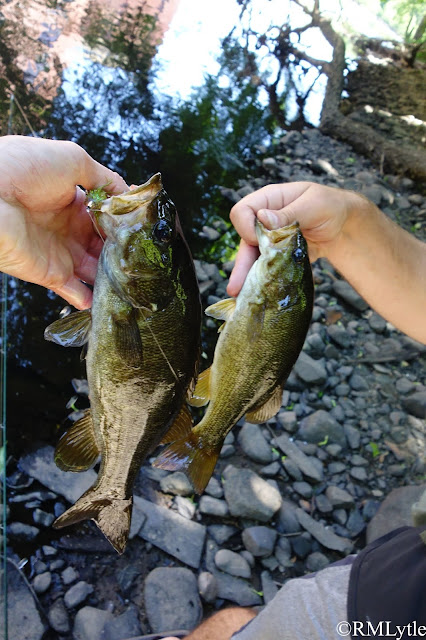One grey morning in late June I stepped onto the sand of one of my favorite flats and looked out over The Sound, unable to see the horizon as the glass calm water blended with the foggy grey sky. When a handful of sand eels spooked out of the bottom of a shallow pool, I knew this would be a good morning. I'd never seen as much as a single one here in the past.
As I walked further still, I saw something else peeking its head out of the sand, a fish of catchable size, and clearly a species I'd never caught. I had a bonefish fly on, and though it wasn't really small enough I had nothing better. I dropped it in front of the fish and it left the sand and ate aggressively. It was much too large to fit in the mystery fish's mouth, but I still managed to hook it and bring it to hand... not that there was much fight on the 10wt.
It would be a little while before I identified this fish. Leo Sheng identified it, actually.
 |
| Life List Fish #165, Striped cusk-eel. Ophidion marginatum. Rank: species. |
The first fish I caught was a sea robin. This was no surprise, they are pushovers.
It took me a little while to realize that, though I was only in a foot and a half of water, the stripers were behind me. The were working the bar edges, rooting out sand eels. Though I wanted to look out into deeper water, I was going to need to turn around to catch these bass.
They were very finicky, as most stripers feeding in just inches of water are. I was getting more follows than I was committed takes. In fact I wasn't really getting any takes at all, until I started to let the fly fall and slowed my retrieve. The I managed to pick up a few fish. They were small, but it isn't just about size... it's about the conditions. I don't care what size the fish are, stripers working extremely shallow water, feeding selectively, and demanding a precise presentation is extremely engaging fishing.
After a while the visible bass activity dissipated, so I tied on a Gurgler and attempted to get a topwater sea robin... it didn't take long. Mission success. I left happy.
Until next time,
Fish for the love of fish.
Fish for the love of places fish live.
Fish for you.
And stay safe and healthy.
Thank you to my Patrons; Erin, David, John, Elizabeth, Brandon, Christopher, Shawn, Mike, Sara, Leo, and Franky for supporting this blog on Patreon.
















































